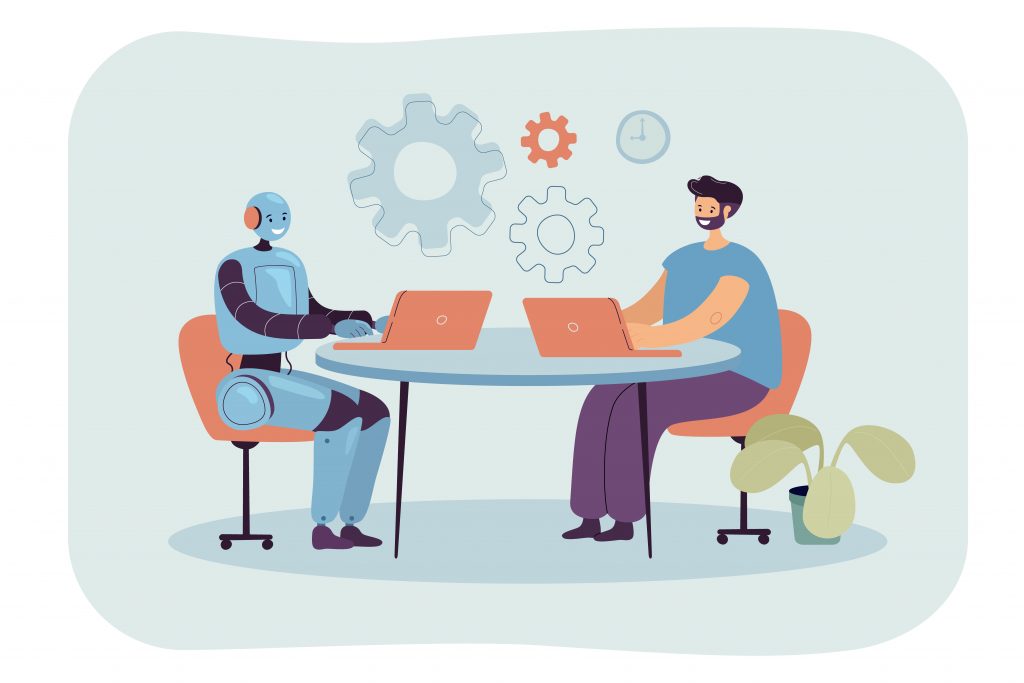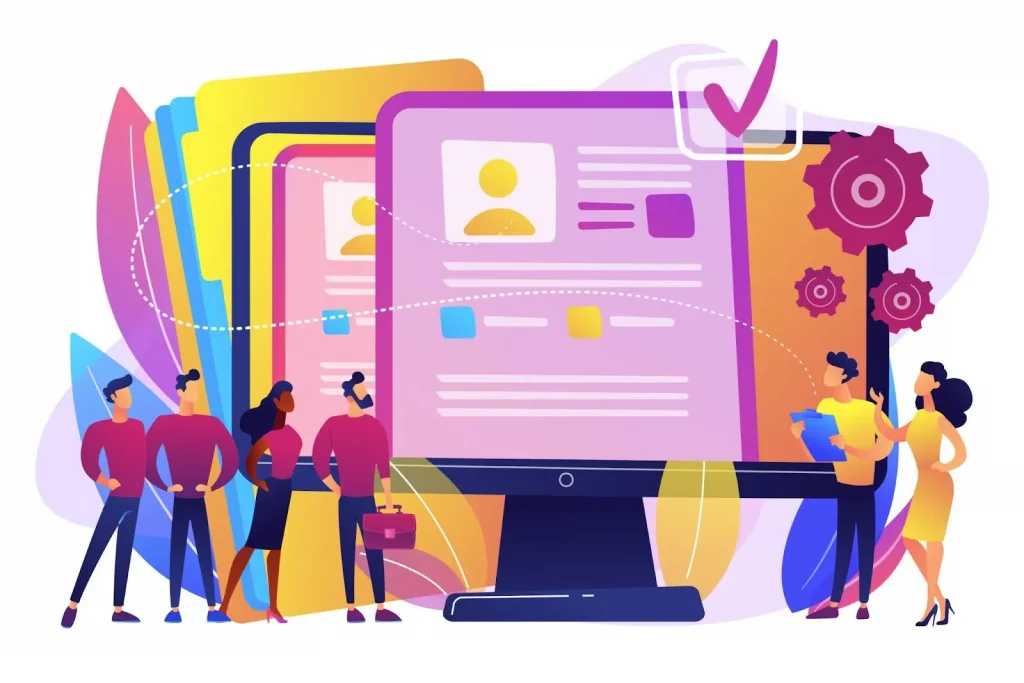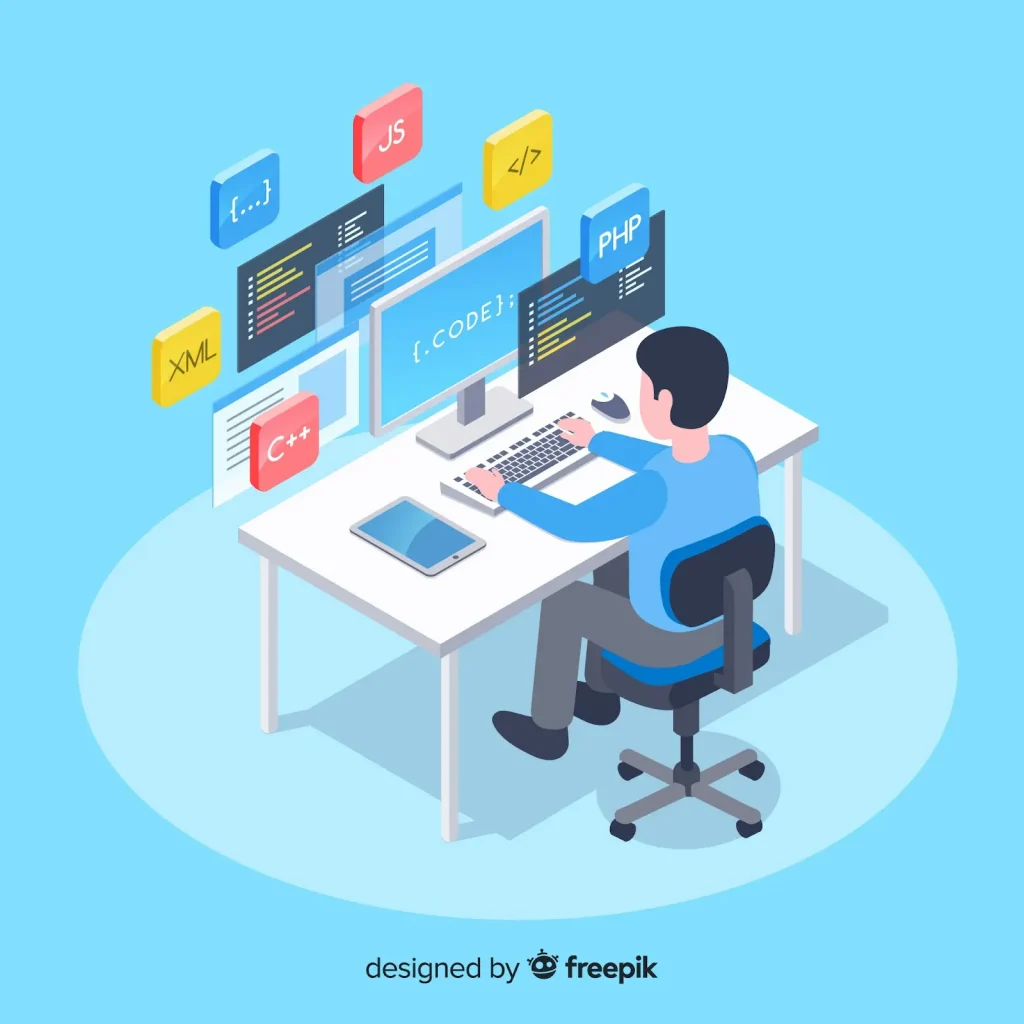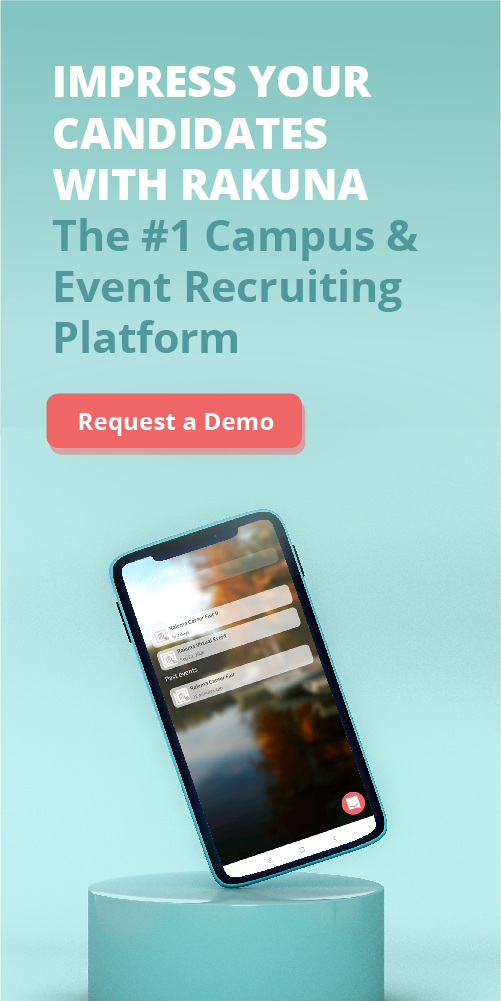Do you know that a significant 88% of companies worldwide employ a form of AI technology in their HR operations, particularly in the context of recruitment?
Recruitment teams have long employed AI for recruiting, but the introduction of generative AI, such as ChatGPT, has ushered in a recent wave of change. These newer AI technologies are opening up fresh avenues for efficiency and creativity. However, they’ve also sparked some uncertainty and concerns. The truth is that generative AI is bringing a positive transformation to the recruiting process, and its potential is only growing with the global AI market, which is expected to surpass $1.8 billion by 2030. Whether it’s enhancing diversity in hiring or automating the less enjoyable aspects of the job, recruiters should consider harnessing Generative AI to their advantage.
In this guide, we’ll explore how Generative AI is transforming recruitment and its benefits for businesses in recruitment.
What is Generative AI?

Generative artificial intelligence (GAI) encompasses a range of algorithms, including ChatGPT, designed to produce fresh content across various mediums like audio, code, images, text, simulations, and videos. These algorithms represent a transformative leap in the realm of content creation.
Here’s how ChatGPT describes itself as a Generative AI:
“I am a generative AI model developed by OpenAI. I possess the capability to generate human-like text based on the input I receive. My primary function is to provide information, answer questions, and assist with various tasks. Users interact with me through text-based conversations, making me a versatile tool for a wide range of applications, from answering inquiries to generating content. My responses are generated based on a vast dataset of text, enabling me to provide relevant and coherent information. I aim to assist users with accurate and helpful responses in a professional and efficient manner, making me a valuable resource for information and communication.”
Did anything strike you as unusual in that paragraph? Perhaps not. The grammar is flawless, the tone is appropriate, and the narrative flows smoothly.
Traditionally, the talent acquisition process has been resource-intensive, requiring significant human effort and time. From drafting job descriptions to maintaining communication with candidates through multiple channels, it’s a meticulous endeavor. However, generative AI algorithms are poised to streamline these tasks.
One of the foremost advantages of generative AI in recruitment is its ability to generate high-quality content rapidly. This proves invaluable in composing job postings, creating personalized communications with candidates, and even drafting rejection or acceptance letters. The speed and precision of AI-generated content can significantly reduce administrative burdens, giving recruiters more time to interact and create rapport with candidates and ensuring that positions are filled swiftly with well-suited talent.
Generative AI also contributes to the enhancement of candidate experiences. AI-powered chatbots can engage with applicants in real-time, answering queries, providing updates, and even conducting preliminary assessments. This level of responsiveness and engagement leaves candidates with a positive impression of the hiring process and the company.
How Generative AI Is Being Used by Business Leaders

According to the report titled “1 in 4 companies have already replaced workers with ChatGPT” by ResumeBuilder (02/2023) to see how many companies currently use or plan to use ChatGPT from ResumeBuilder, ChatGPT is making its way into the software toolbox of many companies.
Out of 1000 surveyed companies, 49% of them currently utilize ChatGPT. Notably, a vast majority of these adopters, 93%, express intentions to expand their use of the chatbot.
Furthermore, there is considerable interest among companies that have not yet implemented ChatGPT, as 30% of them plan to start using it in the near future, with 85% intending to do so within the next 6 months.
The applications of ChatGPT within these organizations are diverse and reflect its versatility. Business leaders report various uses, with notable applications in hiring, code generation, content creation, and customer support.
- A significant 66% of companies using ChatGPT rely on it for writing code. This showcases its capability to expedite and automate a crucial aspect of software development.
- For copywriting and content creation, 58% of these companies employ ChatGPT, emphasizing its role in streamlining content production processes.
- Customer support is another area where ChatGPT proves invaluable, with 57% of companies utilizing it for this purpose. This speaks to its ability to provide quick and efficient responses to customer inquiries.
- ChatGPT plays a pivotal role in summarizing meetings and documents, with 52% of companies utilizing it for this task, which aids in information consolidation and decision-making.
- Most notably, ChatGPT is a vital tool in many companies’ hiring processes. A substantial 77% use it to craft job descriptions, while 66% utilize it for drafting interview requisitions, and 65% rely on it to respond to applicants. These applications underscore its value in optimizing the recruitment process.
Why Recruiters Should Care About Generative AI
Generative AI technology carries exceptional significance for the recruitment industry. It has the potential to bring about transformative changes that recruiters should keenly embrace and harness to stay competitive in the evolving landscape.
Consider this: According to McKinsey’s report on Generative AI economic potential, this technology could inject a staggering $2.6 trillion to $4.4 trillion into the global economy annually. To put this into context, it surpasses the entire GDP of the United Kingdom in 2021, which stood at $3.1 trillion. This remarkable impact could elevate the role of generative AI in the recruitment sector, offering new ways to identify, assess, and engage with talent.
Generative AI’s influence extends beyond the economy; it will revolutionize how businesses operate across sectors. Banking, high-tech, and life sciences are among the industries that stand to gain significantly. For example, in banking, it could contribute an extra $200 billion to $340 billion to annual revenues. These industries’ need for top talent will intensify, making recruiters who leverage generative AI invaluable in identifying the right candidates.
Generative AI excels in automating tasks, which is a game-changer for recruiters. Current generative AI, combined with other technological advancements, can automate around 60 to 70 percent of the tasks that typically occupy recruiters’ time. This is a substantial leap from earlier estimates, where only half of the work activities were deemed automatable. As a result, recruiters will have more time to focus on strategic aspects of their roles, such as building relationships and understanding the nuanced needs of their organizations and candidates.
The Benefits of Using AI for Recruiters

Admin Tasks Automation
The implementation of Generative AI in the recruitment process promises a boost in efficiency across the board. From posting job listings to welcoming new hires, this technology is poised to reshape the way we approach talent acquisition.
Generative AI is a game-changer when it comes to streamlining recruitment processes. It steps in to tackle the time-consuming tasks that often bog down recruiters. From crafting job postings to sifting through resumes, these processes can now be automated, freeing up valuable time and resources.
With these repetitive tasks off their plate, recruiters can shift their focus to more strategic aspects of talent acquisition. They can dedicate their expertise to identifying top candidates, devising innovative recruitment strategies, and nurturing relationships with potential hires. This empowerment enables recruiters to optimize their overall performance.
Accelerated Initial Candidate Selection
AI-driven algorithms are reshaping the landscape of candidate selection by expediting the initial stages of the process. These innovations streamline the collection of candidate information and leverage sourcing tools for quicker, more efficient decision-making. With the power of machine learning, generative AI is at the forefront, enabling faster and more informed choices. This not only reduces the time spent on initial selection but also ensures a fair and thorough evaluation of candidates.
Speed Up Content Creation And Improve Content Quality
Generative AI, such as ChatGPT, can serve as a versatile conversational partner, akin to a personal assistant, catering to your inquiries and simplifying laborious tasks based on the prompts you furnish it with. Whether it’s brief, one-sentence queries or detailed prompts enriched with context, ChatGPT adapts to your needs. For recruiters, this AI tool can revolutionize your daily operations.
Recruiters are harnessing the power of generative AI to streamline and, in some cases, entirely automate content creation. This encompasses various aspects of the recruitment process:
- Job Descriptions: ChatGPT can assist in composing compelling job descriptions that effectively communicate the role’s requirements, responsibilities, and company culture. By automating this task, recruiters save valuable time while maintaining consistency and clarity in their job postings.
- Candidate Outreach Emails: ChatGPT can generate outreach messages, allowing recruiters to reach a broader pool of talent efficiently. The AI ensures that each message is well-crafted, personalized, and tailored to the specific role.
- Interview Questions: Recruiters can leverage ChatGPT to formulate interview questions that delve into candidates’ qualifications, experiences, and cultural fit. By automating the question selection process, recruiters can focus on assessing candidates’ responses during interviews, enhancing the overall hiring process.
Increase Candidates’ Engagement Rate
In today’s competitive job market, providing an enhanced candidate experience is crucial. Job seekers are looking for a seamless and personalized application process and hiring journey. Fortunately, the latest advancements in generative AI-powered chatbots and virtual assistants can play a pivotal role in achieving this goal.
The traditional job application process can often be cumbersome and frustrating for candidates. They may have questions about the status of their application or want to clarify details about the role. This is where AI-powered chatbots step in. These cutting-edge tools are designed to streamline and personalize the candidate experience.
Timely Updates and Communication
One of the key benefits of AI-powered chatbots is the ability to provide candidates with timely updates. Instead of waiting in uncertainty, applicants can receive real-time notifications about the progress of their applications. Whether it’s a confirmation of receipt, an invitation for an interview, or a status update, candidates can stay informed of every step of the way.
Moreover, these chatbots facilitate transparent and open communication. Candidates can seek answers to their queries promptly. This transparent communication builds trust and ensures that candidates have all the information they need to make informed decisions.
Improved Experience and Satisfaction
The ultimate goal of implementing AI-powered chatbots and virtual assistants in the hiring process is to improve the overall candidate experience and satisfaction. Organizations can stand out as employers of choice by offering a streamlined, personalized, and responsive experience.
Possible Concerns When Implementing Generative AI in Recruitment
Diversity and Bias in Recruitment
Diversity and bias are critical considerations when it comes to AI language models. Just like humans, these models can inherit biases present in the data they are trained on. A noticeable instance of this occurred with Amazon in 2018 when they scaled down their AI-based hiring system because it exhibited gender bias, particularly against women.
James Dean, Google’s head of AI, acknowledges the pivotal role of input data in determining the effectiveness of machine learning models.
To address and mitigate bias in AI language models, organizations must adopt a proactive approach. Here are key steps to reduce bias and promote fairness:
- Inclusive Datasets: It is essential to curate training datasets that encompass a broad spectrum of perspectives and experiences. By including data from diverse sources and backgrounds, organizations can help their AI models develop a more balanced understanding of language and context. This inclusivity should extend to gender, race, ethnicity, age, and other demographic factors.
- Regular Review of Feature Selection: The feature selection process plays a crucial role in shaping the behavior of AI language models. Organizations should regularly review and assess the features and attributes that influence the model’s decision-making. This review process should be conducted with an eye toward identifying and rectifying any potential biases in the feature set.
- Continuous Monitoring: Bias in AI is not a one-time fix; it requires ongoing vigilance. Organizations should implement systems to continually monitor the performance of AI algorithms. This involves tracking the model’s outputs and evaluating them for any signs of bias or unfairness. Regular audits and assessments can help identify and rectify bias as it arises.
- Diverse Teams: Building and maintaining AI systems that are free from bias also necessitates a diverse and inclusive team of developers, data scientists, and experts. Diverse perspectives and backgrounds within the team can lead to more thorough and thoughtful assessments of potential bias and fairness issues.
- Ethical Guidelines: Establish clear ethical guidelines for AI development and deployment. These guidelines should emphasize fairness, transparency, and accountability in AI systems. Teams should adhere to these principles throughout the AI development lifecycle.
- User Feedback: Encourage user feedback and provide mechanisms for users to report instances of bias or unfairness in AI interactions. User input can be invaluable in identifying and rectifying bias that may not be immediately evident to developers.
Privacy
Privacy is a paramount concern in talent acquisition, particularly when using conversational AI tools. Treating personal and confidential data with the utmost care is essential, especially when common data privacy regulations such as GDPR (General Data Protection Regulation) and similar measures worldwide have been updated to cover the usage of information collected by GAI. It’s crucial to consider every interaction with conversational AI as if it were for public consumption. To ensure responsible AI data privacy practices in accordance with these regulations, companies should take the following steps:
- Clear Data Policies: Establish clear and comprehensive data privacy policies that explicitly outline how personal information is collected, used, and protected when interacting with AI chatbots. These policies should be easily accessible to users and employees.
- Informed Consent: Prior to collecting any personal data, obtain informed consent from individuals. Clearly explain the purpose of data collection, what information is being gathered, and how it will be used. Users should have the option to opt in or out of data sharing.
- Data Minimization: Adopt a data minimization approach, collecting only the data that is strictly necessary for the intended purpose. Avoid collecting excessive or irrelevant information, which can increase privacy risks.
- Anonymization and Pseudonymization: Implement techniques such as data anonymization and pseudonymization to protect individual identities. This ensures that even if data is breached, it cannot be directly linked to specific individuals.
- Encryption: Utilize strong encryption methods to safeguard data during transmission and storage. Encryption helps prevent unauthorized access to sensitive information.
- Regular Audits and Assessments: Conduct regular privacy audits and assessments of AI systems to identify vulnerabilities and ensure compliance with data protection regulations. Make necessary adjustments and improvements based on these findings.
- Third-Party Vendor Compliance: If third-party vendors are involved in AI chatbot development or maintenance, ensure they adhere to stringent privacy standards and guidelines. Clearly define roles and responsibilities in terms of data protection.
- User Control: Empower users with control over their data. Allow them to access, modify, or delete their personal information from AI systems. Respect user preferences for data sharing and communication frequency.
- Education and Training: Educate employees and users about the importance of data privacy and security. Provide training on how to interact with AI systems responsibly and securely.
- Response to Incidents: Develop a robust incident response plan to address data breaches or privacy incidents promptly and effectively. Notify affected parties and regulatory authorities as required by applicable laws.
- Transparency: Be transparent about the capabilities and limitations of AI chatbots. Users should understand the nature of AI interactions and how their data is being utilized.
- Regulatory Compliance: Stay informed about evolving data privacy regulations and compliance requirements in your region and industry. Be prepared to adapt your data practices accordingly.
Lack of Transparency
The implementation of generative AI in talent acquisition offers numerous benefits, but it also presents certain challenges, one of which is the potential lack of transparency. This issue arises when recruiters and candidates are unclear about how AI-driven systems make decisions, which can erode trust and lead to concerns about fairness and bias. Here’s a more in-depth exploration of this challenge and strategies to overcome it:
Challenge: Lack of Transparency in AI Decisions
- Opaque Decision-Making: Generative AI models, such as chatbots or resume-screening algorithms, often make complex decisions based on vast datasets and intricate neural networks. These decisions can be challenging to interpret, leading to a lack of transparency in how candidates are assessed or selected.
- Candidate Anxiety: Candidates may feel apprehensive when interacting with AI-driven systems that seem like “black boxes.” They may question why they were rejected or selected, and this lack of understanding can cause anxiety and mistrust in the hiring process.
- Bias and Fairness Concerns: Without transparency, it’s difficult to determine whether AI systems are making biased decisions. If bias exists in the training data or the model itself, it can perpetuate discrimination, leading to unfair hiring practices.
Strategies to Overcome Lack of Transparency:
- Explainable AI (XAI) Tools: Invest in XAI tools that aim to make AI decision-making more understandable. These tools provide insights into how models arrive at specific conclusions, helping both recruiters and candidates understand the reasoning behind decisions.
- Transparency in Communication: Clearly communicate to candidates when AI tools are being used in the hiring process. Explain the role of AI, the data it uses, and how it contributes to decision-making. Provide candidates with information about the ethical guidelines followed.
- Algorithm Audits: Regularly audit AI algorithms to assess their fairness and potential biases. Evaluate how they perform across different demographic groups to ensure that no group is disproportionately disadvantaged.
- Feedback Mechanisms: Implement mechanisms that allow candidates to seek feedback on their interactions with AI systems. If a candidate is rejected, provide specific feedback on the skills or qualifications that led to the decision.
- Human Oversight: Maintain human oversight throughout the AI-driven recruitment process. Recruiters should have the final say in hiring decisions and be able to intervene in cases where AI may not accurately assess a candidate’s potential.
- Ethical Guidelines: Establish and follow ethical guidelines for AI use in hiring. These guidelines should emphasize transparency, fairness, and accountability. Ensure that your AI systems align with these principles.
- Training and Education: Train recruiters and HR staff on how AI systems work and how to communicate their use transparently. Encourage ongoing education about AI and its implications.
- Candidate Education: Provide candidates with resources and information about AI in the hiring process. Offer FAQs or documentation that explains how AI-driven assessments work and what to expect.
Inaccurate Screening
AI chatbots have undoubtedly revolutionized the way we interact with technology. However, there is a persistent challenge: the occurrence of inaccuracies, often referred to as “artificial hallucinations.” This phenomenon occurs when AI chatbots provide responses that appear convincing but are entirely fabricated and incorrect. Here are some strategies to help you avoid this issue:
- Training Data Quality: Ensure that the training data used for your generative AI model is of high quality and relevance to the recruitment domain. This helps the AI system generate responses that are based on accurate and reliable information.
- Domain Expertise: Involve domain experts in the development and training of your AI system. Their knowledge can guide the model in generating contextually accurate responses.
- Regular Updates: Continuously update and fine-tune the AI model as the recruitment landscape evolves. This includes incorporating new industry trends, job descriptions, and changing hiring practices into the model’s training data.
Maintenance Cost
Training AI models are expensive due to the need for significant computational resources. GPUs, such as the Tesla V100, are commonly used for this purpose, but they come at a high cost.
Additionally, maintaining AI systems is also costly. Google’s DeepMind Alphago, for instance, required a substantial number of CPUs and GPUs to function effectively. These resources need to be regularly updated to handle new data. Moreover, the risk of hardware failures can result in downtime and data loss, adding to the overall expenses.
In summary, AI model training and maintenance are expensive endeavors due to the high cost of GPUs, ongoing hardware and software updates, and the potential for disruptions caused by hardware failures. Careful financial planning and resource management are crucial in this field.
Legal & Data Security Concerns
The widespread adoption of generative AI tools in businesses has raised concerns about data security. Neil Thacker, Chief Information Security Officer at Netskope for EMEA and Latin America, has pointed out these risks.
One key issue is that companies like OpenAI, the creator of ChatGPT, use data and queries stored on their servers to train their AI models. If cybercriminals manage to breach OpenAI’s systems, they could access sensitive business data, causing significant harm.
OpenAI has introduced options like “opt-out” and “disable history” to enhance data privacy, but it’s essential for users to actively select these safeguards.
While some regulations, such as the UK’s Data Protection and Digital Information Bill and the EU’s proposed AI Act, are steps in the right direction, Thacker notes that there’s still uncertainty about how companies using generative AI will handle user data. This lack of clarity poses an ongoing challenge to data privacy.
How Can I Adapt AI for Recruiting

Knowing is already half the battle. If your talent acquisition team is looking for tips, advice, and best practices on how to seamlessly implement generative AI for recruitment, read on in our FREE recruitment resource: Rakuna’s Guide to Simple Generative AI for Recruiting Applications


